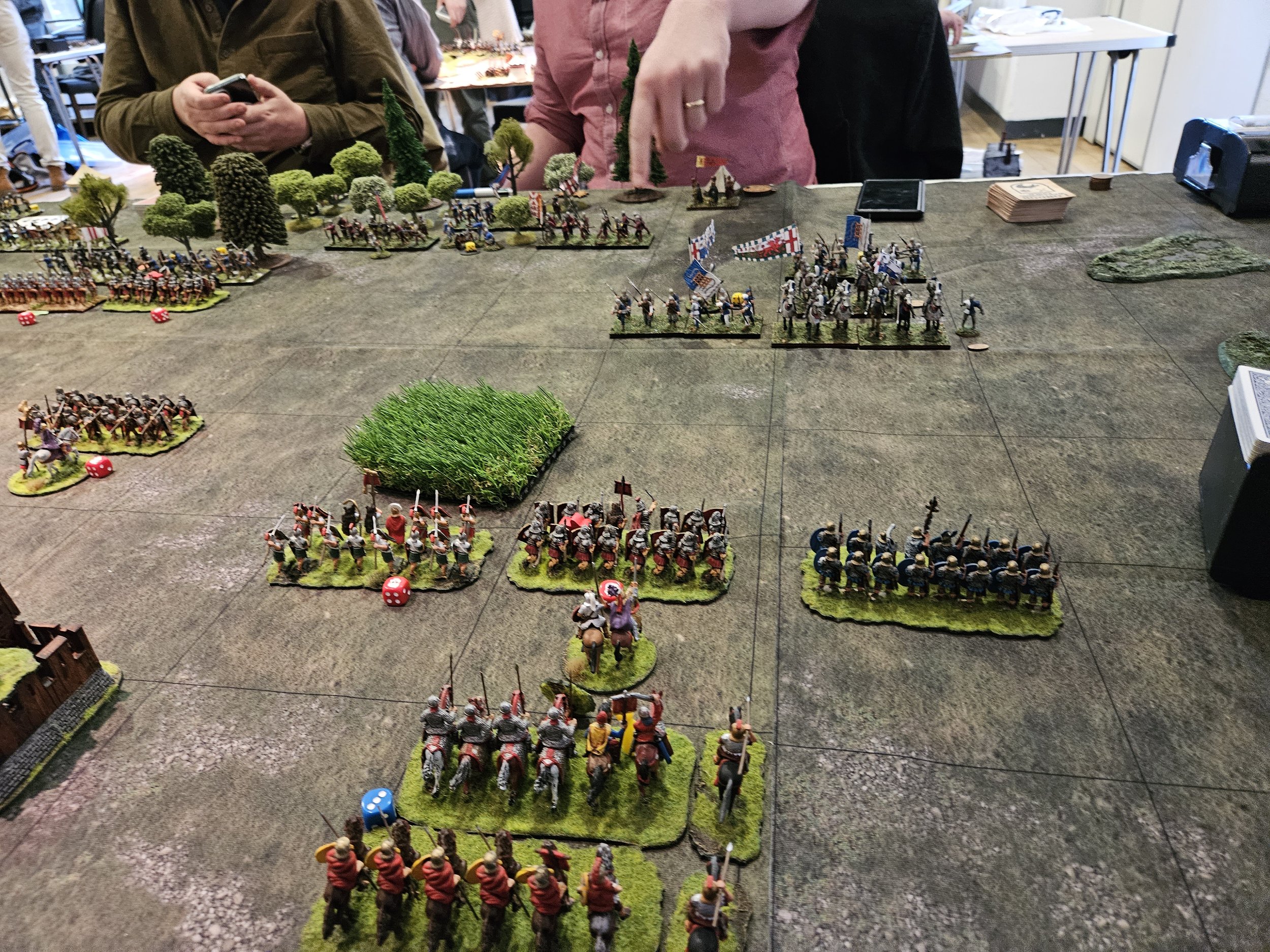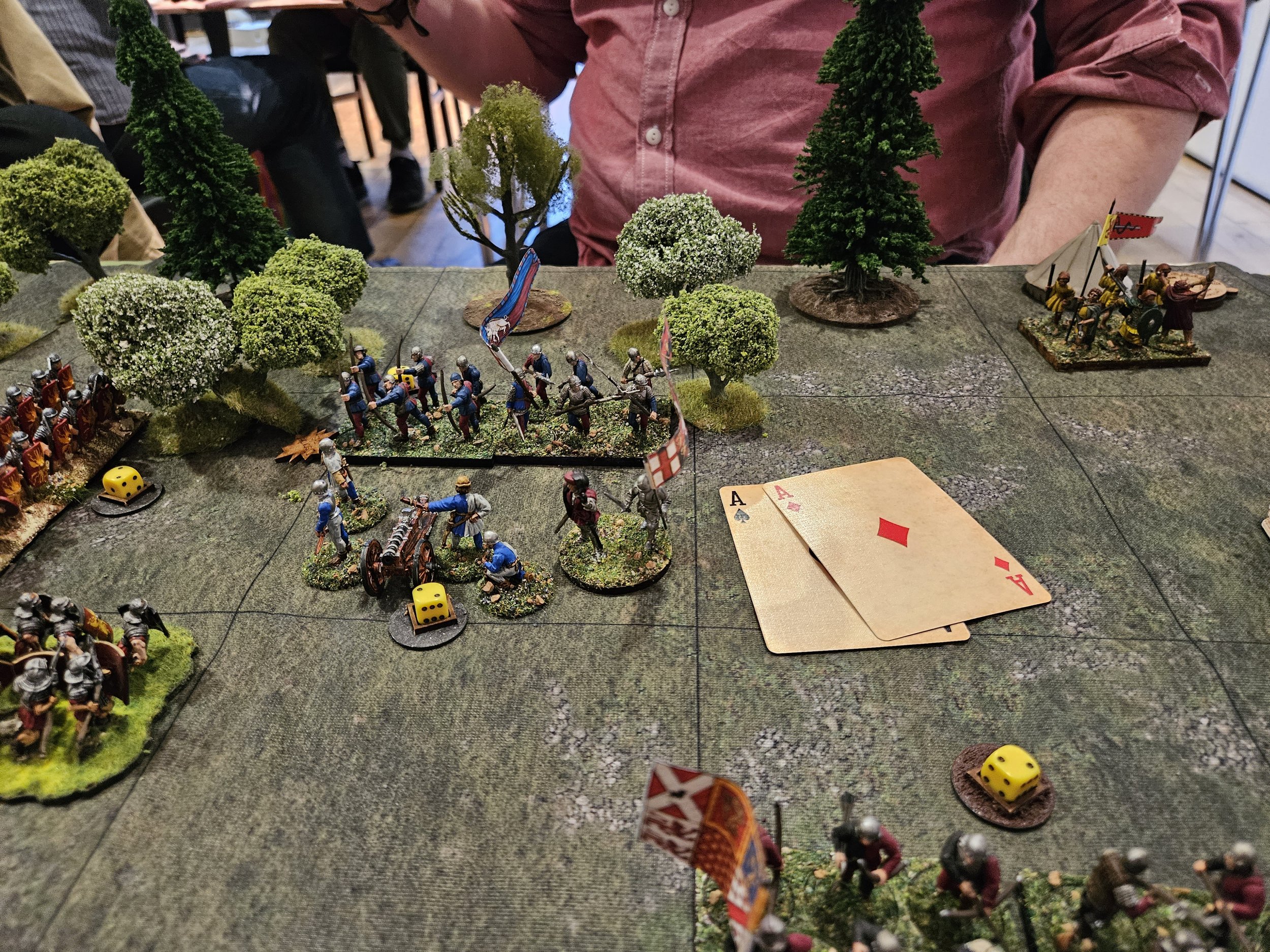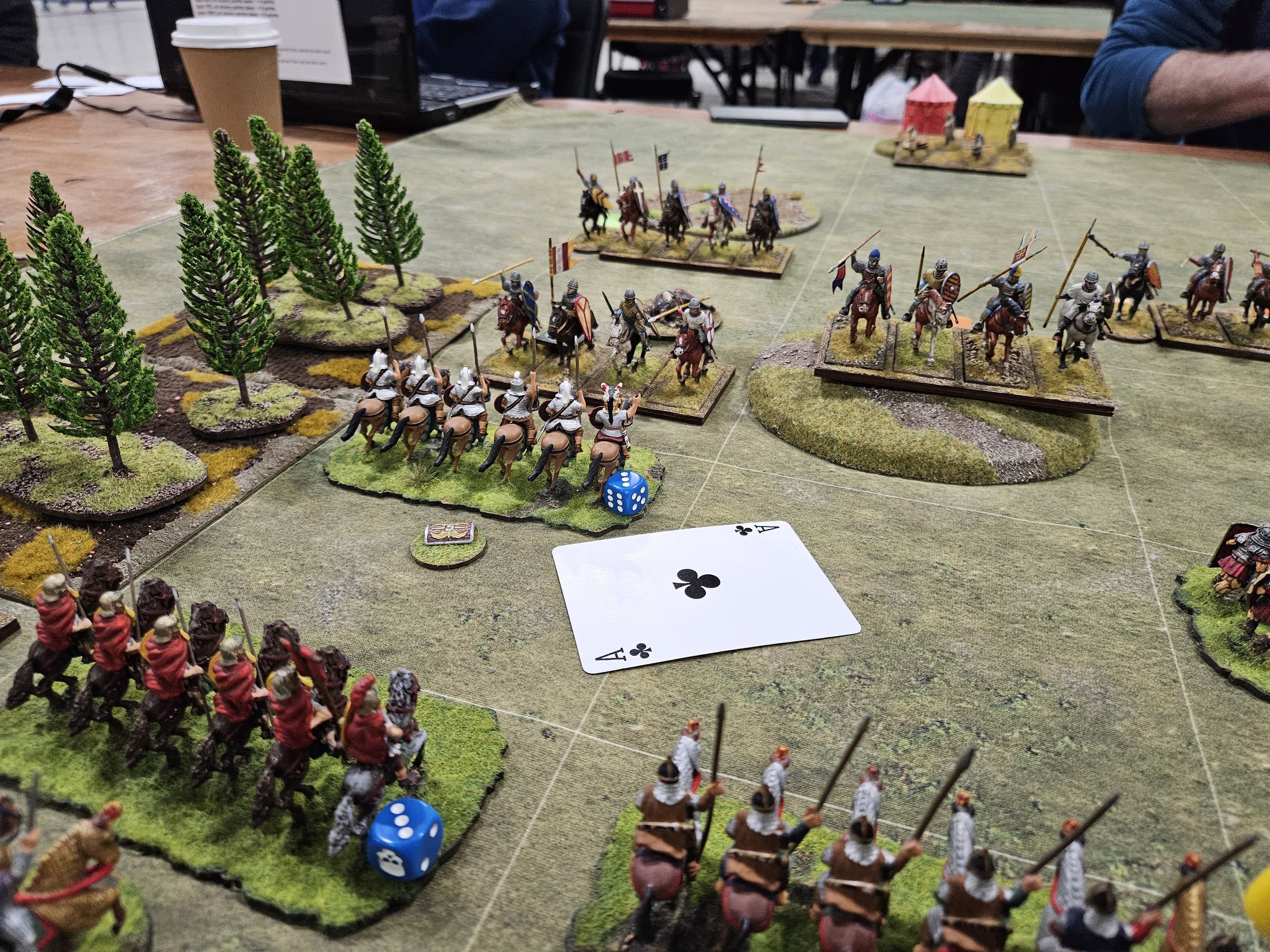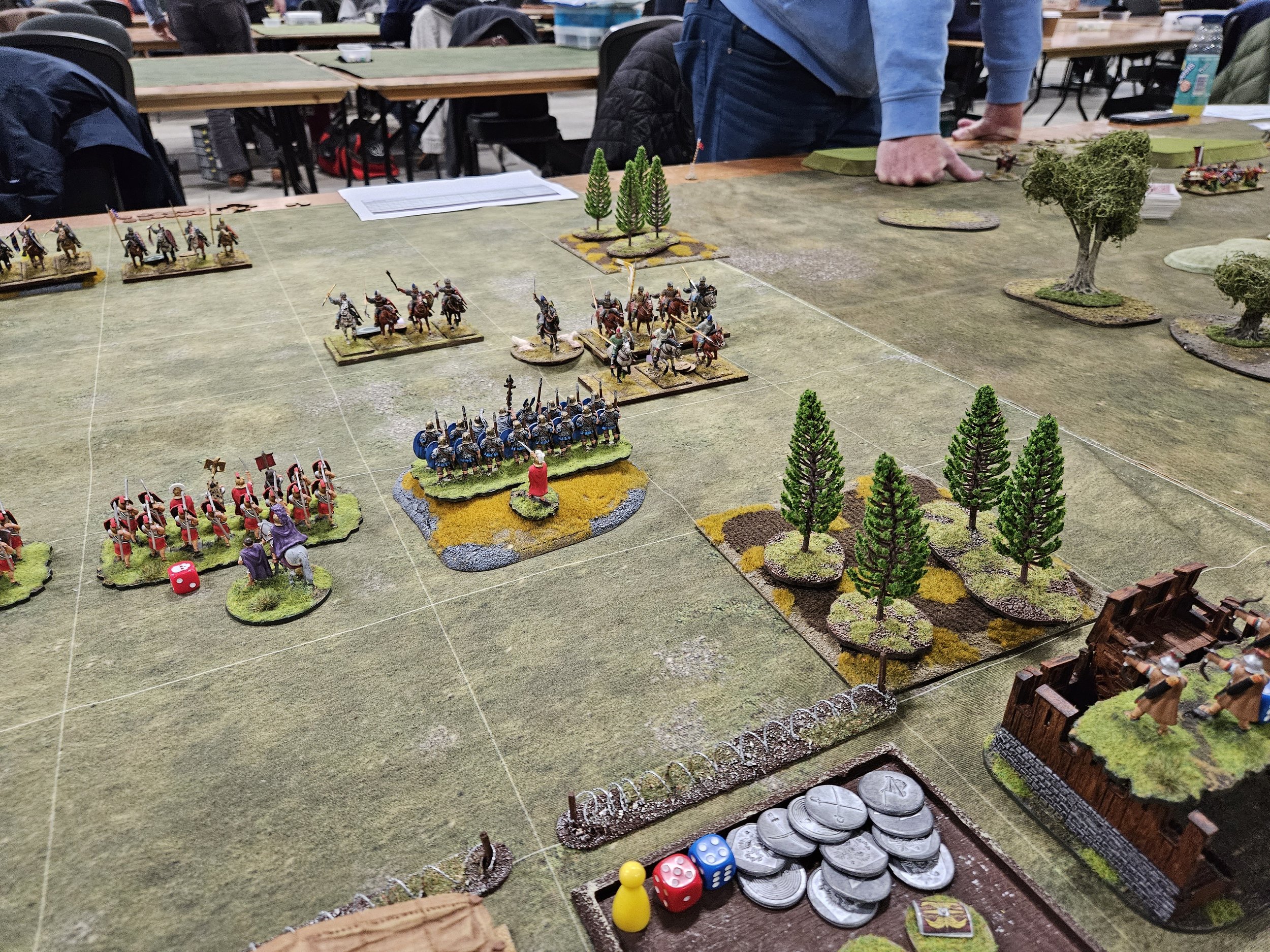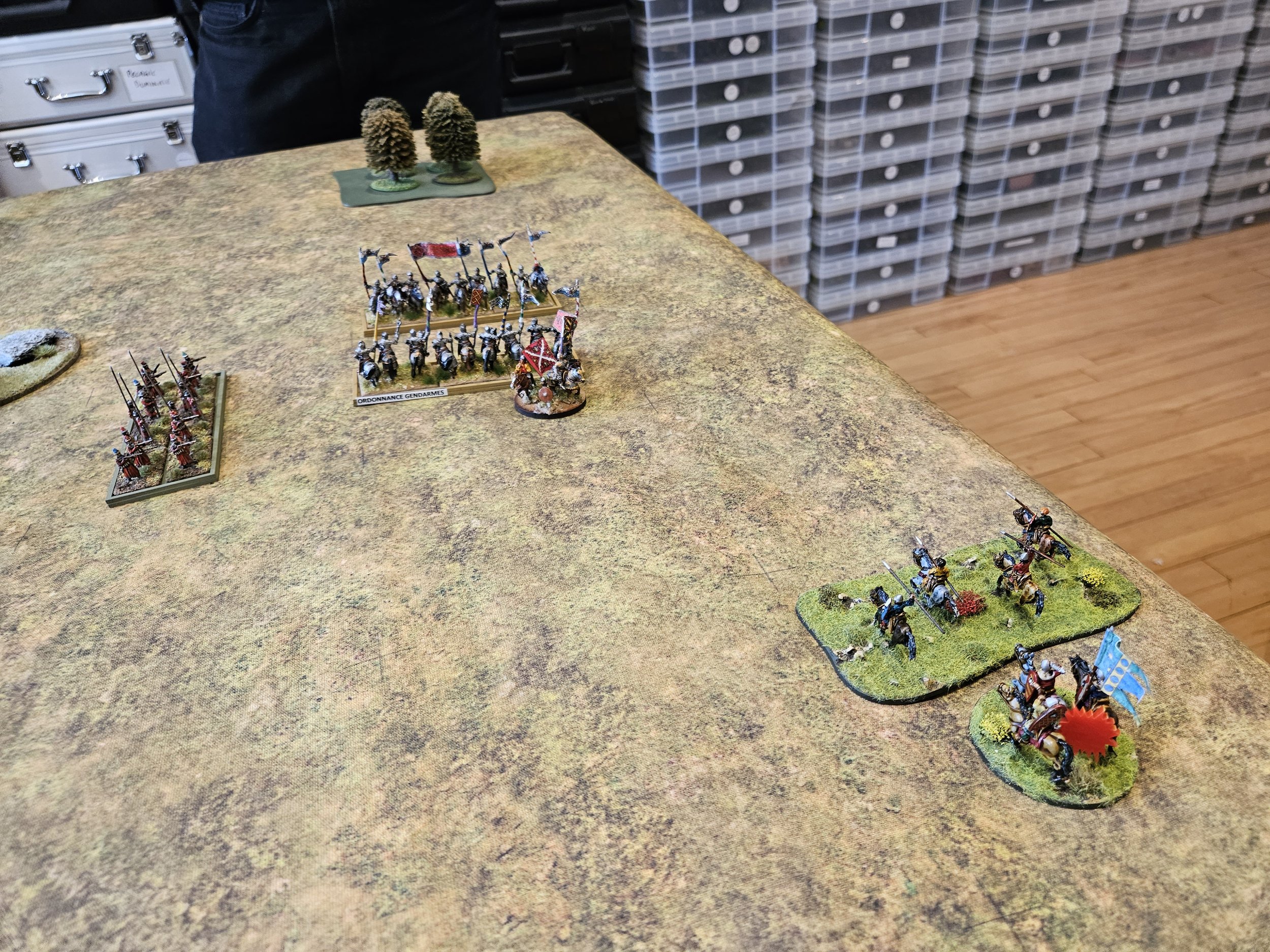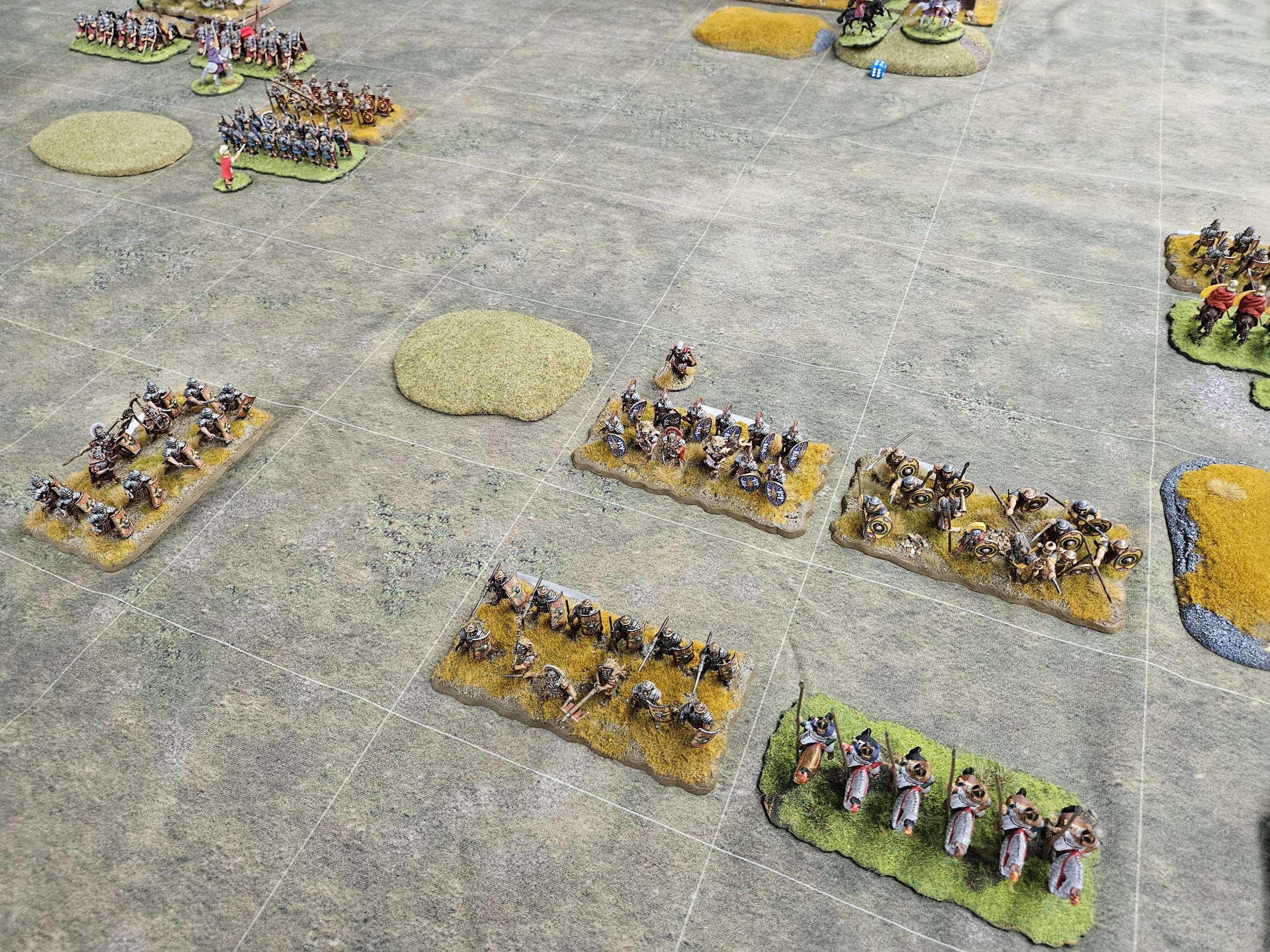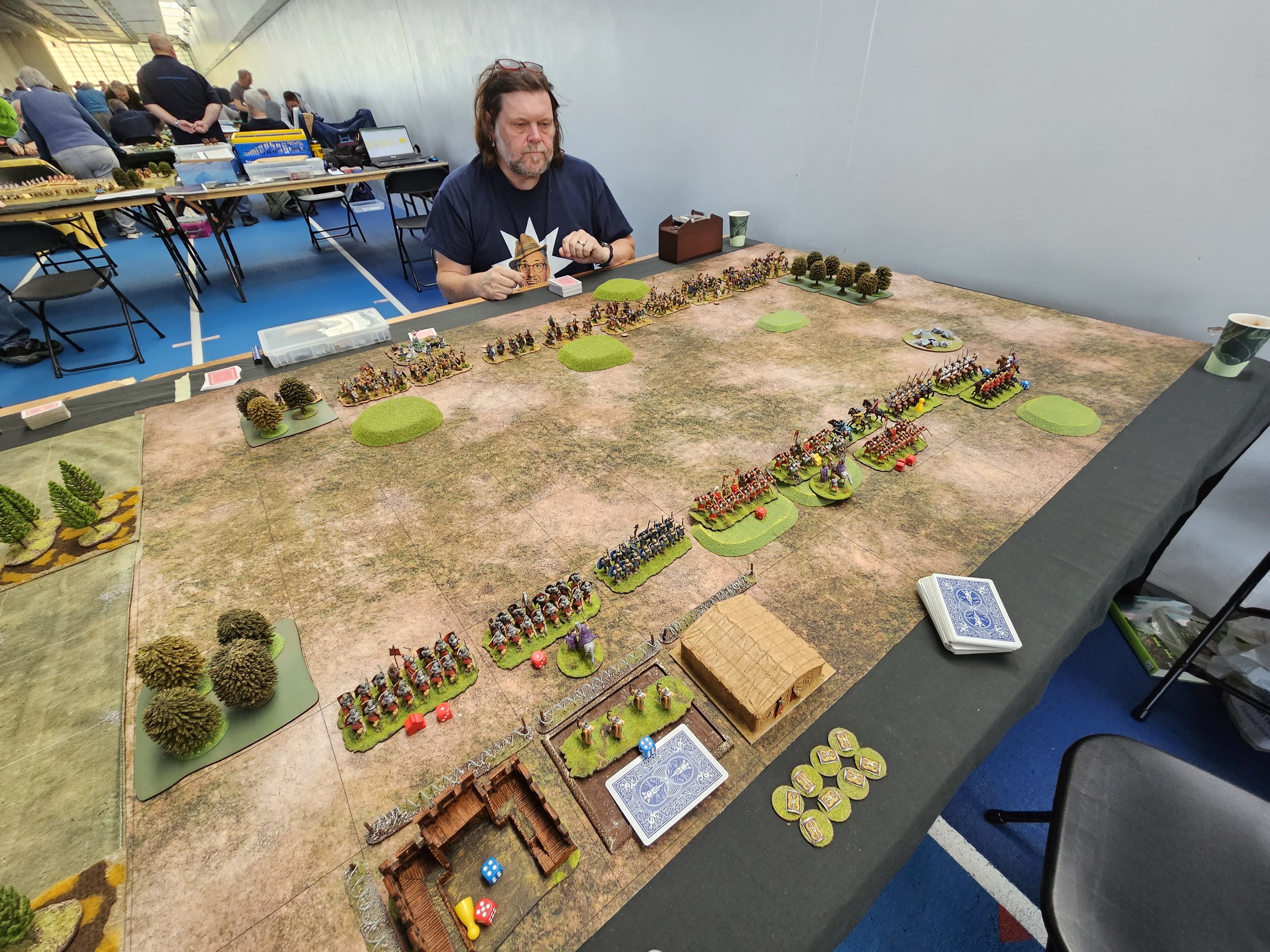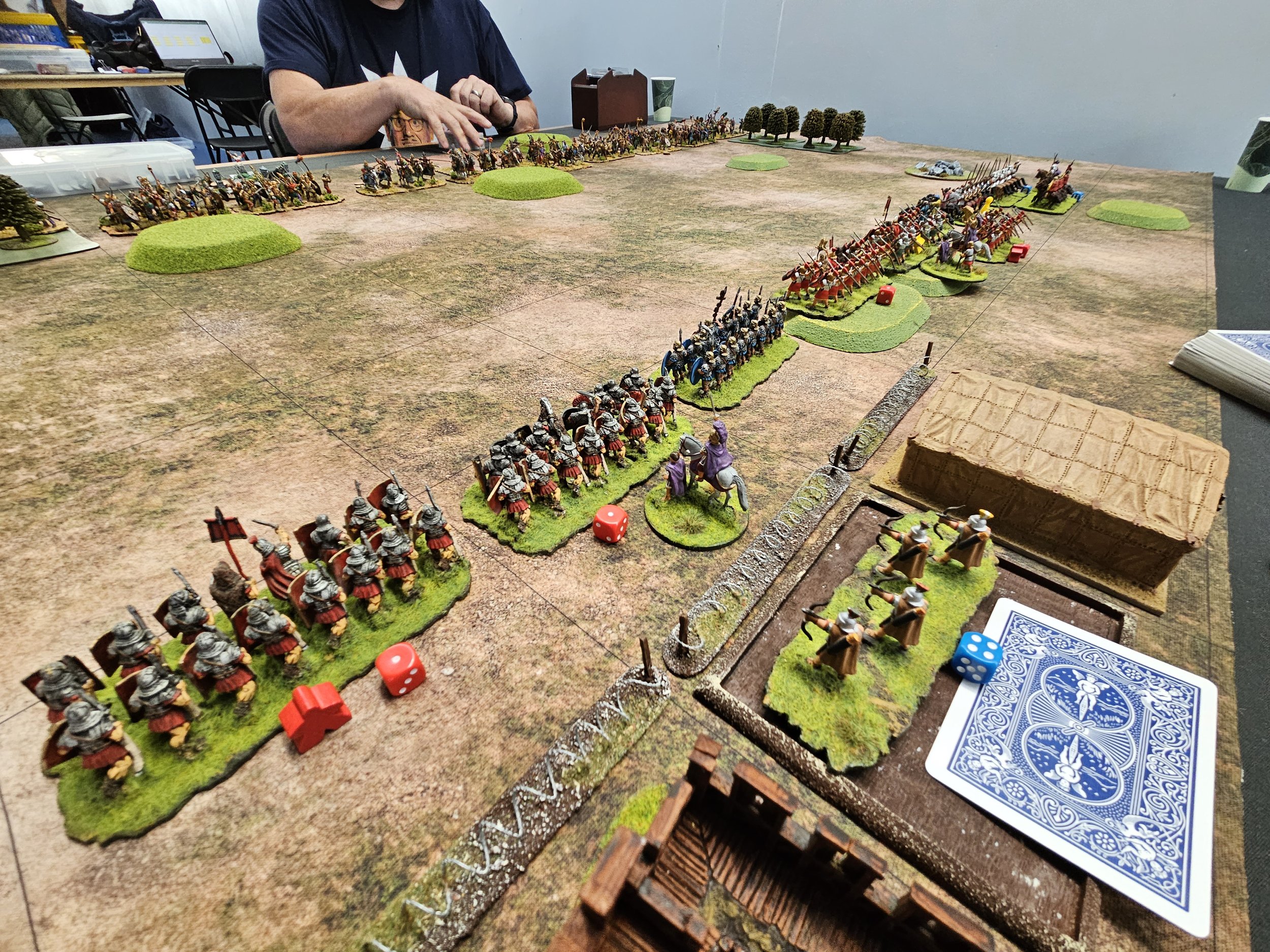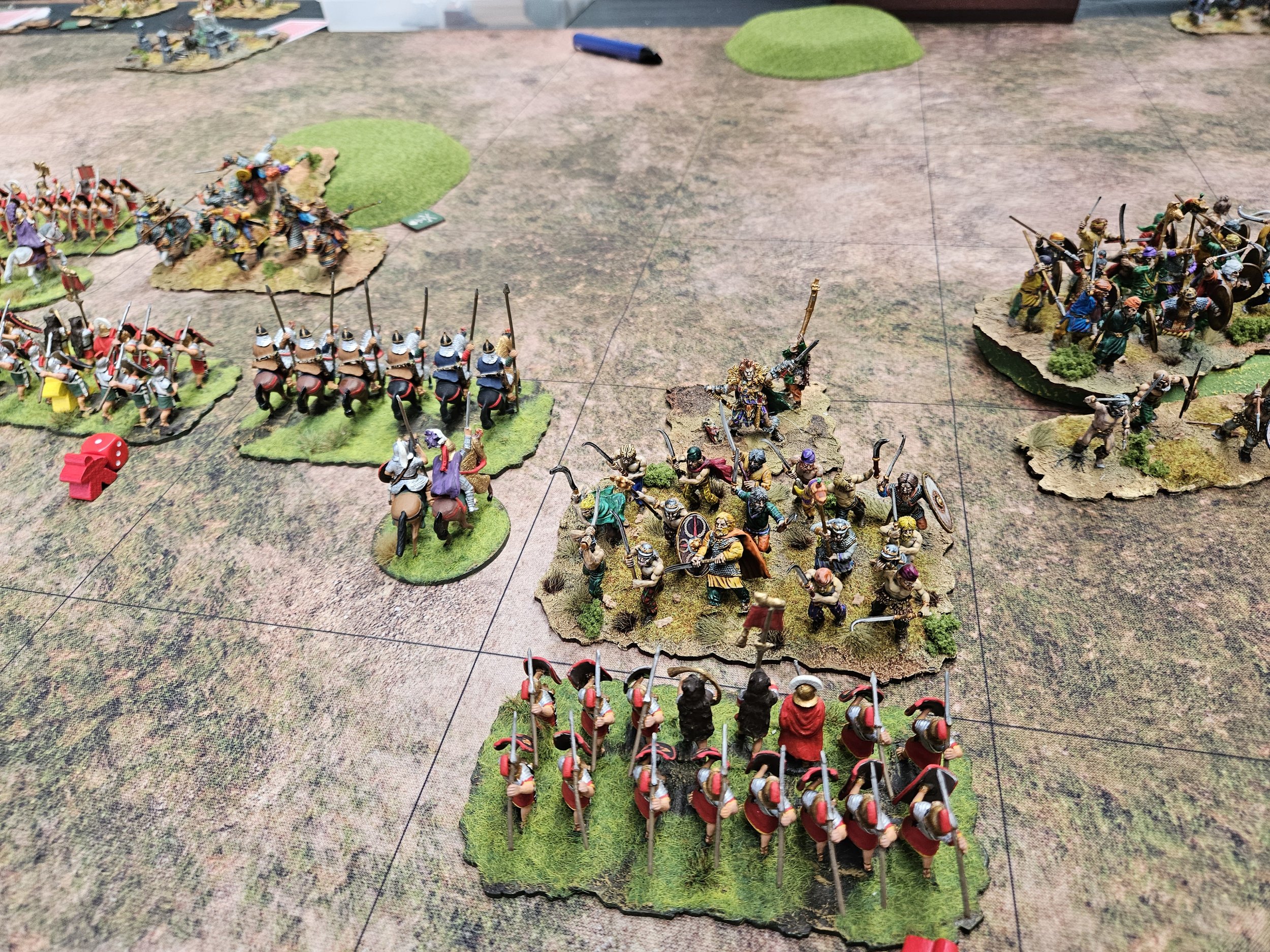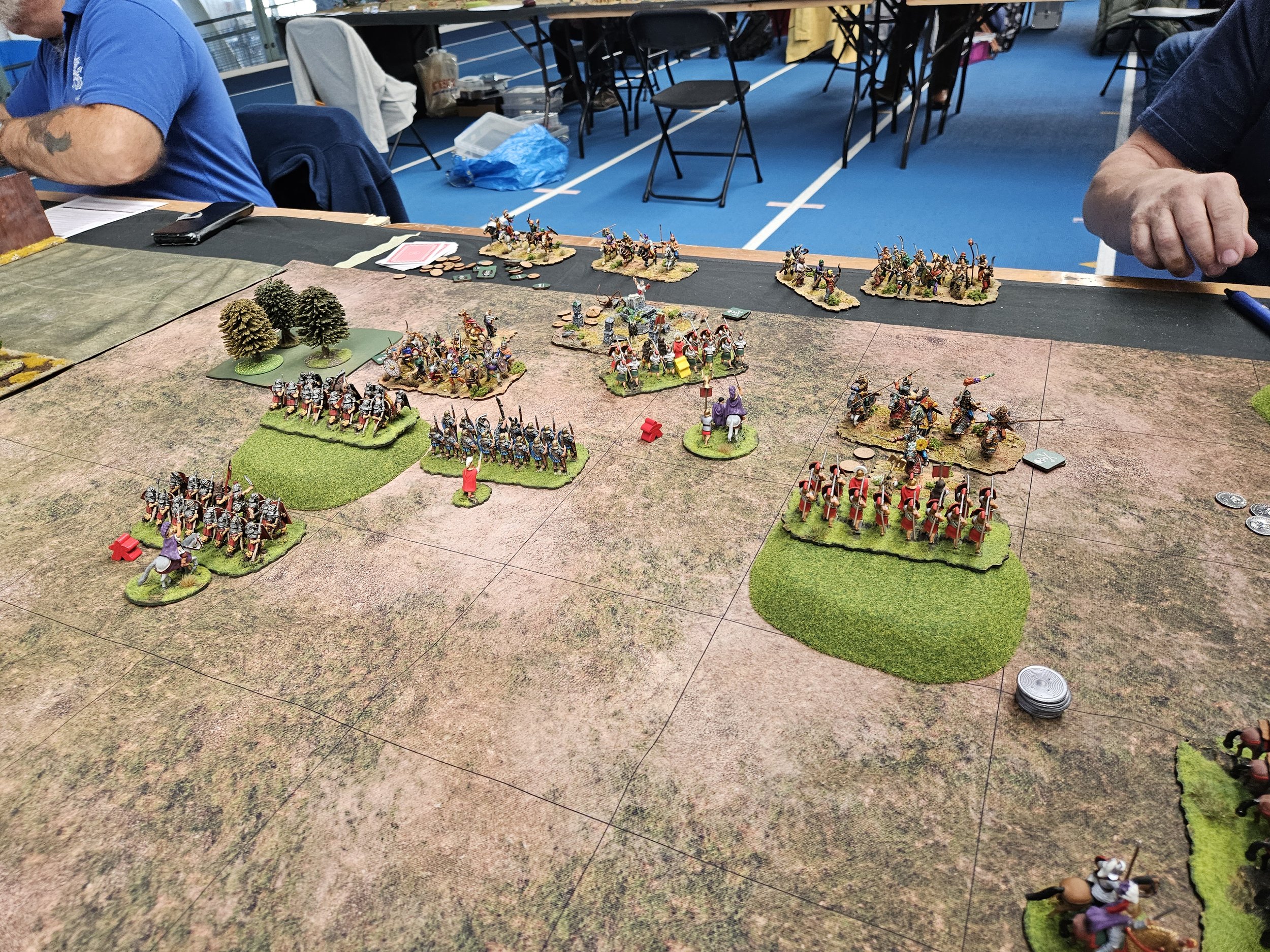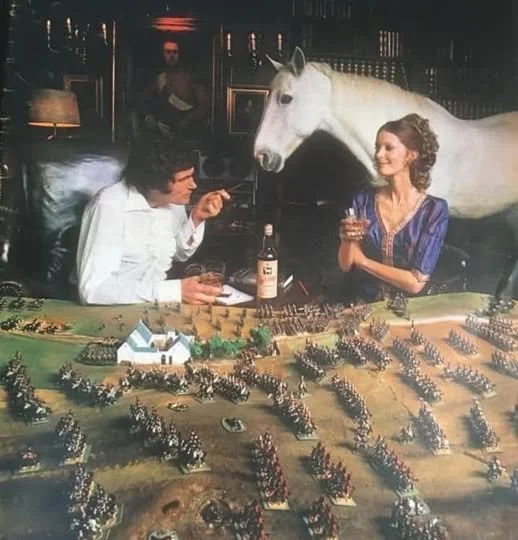Two the Strongest Tournament: Game Three
/I’m still working my way through a backlog of battle reports that seems to have built up over the last couple of months.
Today features the third and final game at the Two the Strongest doubles tournament organised by the London Wargaming Guild back in November. My partner, Peter, and I had won our first two games and woulkd now face Tim and Matt playing Normans and 100YW French respectively.
The game would be fought across quite an unusual set-up representing a famous battle from history. Apologies, but I can’t remeber which one…but there were a lot of hills on the flanks!
The Romans
The French
For this battle, Peter and I reversed our roles: I would go forward against the Normans whilst Peter hung back against the 100YW French.
My cavalry (Equites Alares and Equites Contarium) duly swung out to the right and advanced forward at speed. They soon met the enemy coming the other way and, much to my delight, almost immediately knocked one Norman unit off the table and sent another to the retreat.
My Roman cavalry have tken some stick this year for their performance on the tabletop, but I must confess that they didn’t put a foot (hoof?) wrong this game: a fitting redemption in the last tournament game of the season.
Meanwhile, my legionaries had also advanced towards the enemy line and pinned them in place as planned. I needed to get a move on, however, as I could see that Peter’s troops were under some pressure from a horde of Late Knights!
My troops began to wheel to their left, ready to roll up the enemy line but, before they could do any significant damage, my cavalry inflicted another loss on the Normans, including killing their commander in chief. This was too much for these early Frenchies to take, and they fled the field, leaving their later compatriots to fight on alone.
The game was a bit of a foregone conclusion from then on, as Peter’s troops were still resisting, leading to an eventual 15-6 victory for the Romans.
Points were totted up and it turned out the Peter and I had actually won the day!
A very good way to end the season, with my first tournament win, and huge thanks to all the Guilders for organising an excellent competition that I shall certainly enter again next year.
If you look at the picture to the right, you will see I am clutching a box of Perry Plastics as a prize (along with the rather marvellous “playing card” trophy). This box turned out to be the naissance of my new 28mm army for 2024, although which later medieval army I will actually paint up is still in doubt at time of writing, along with whether I can actually get it finished in time for the Welsh Open at the end of January!







